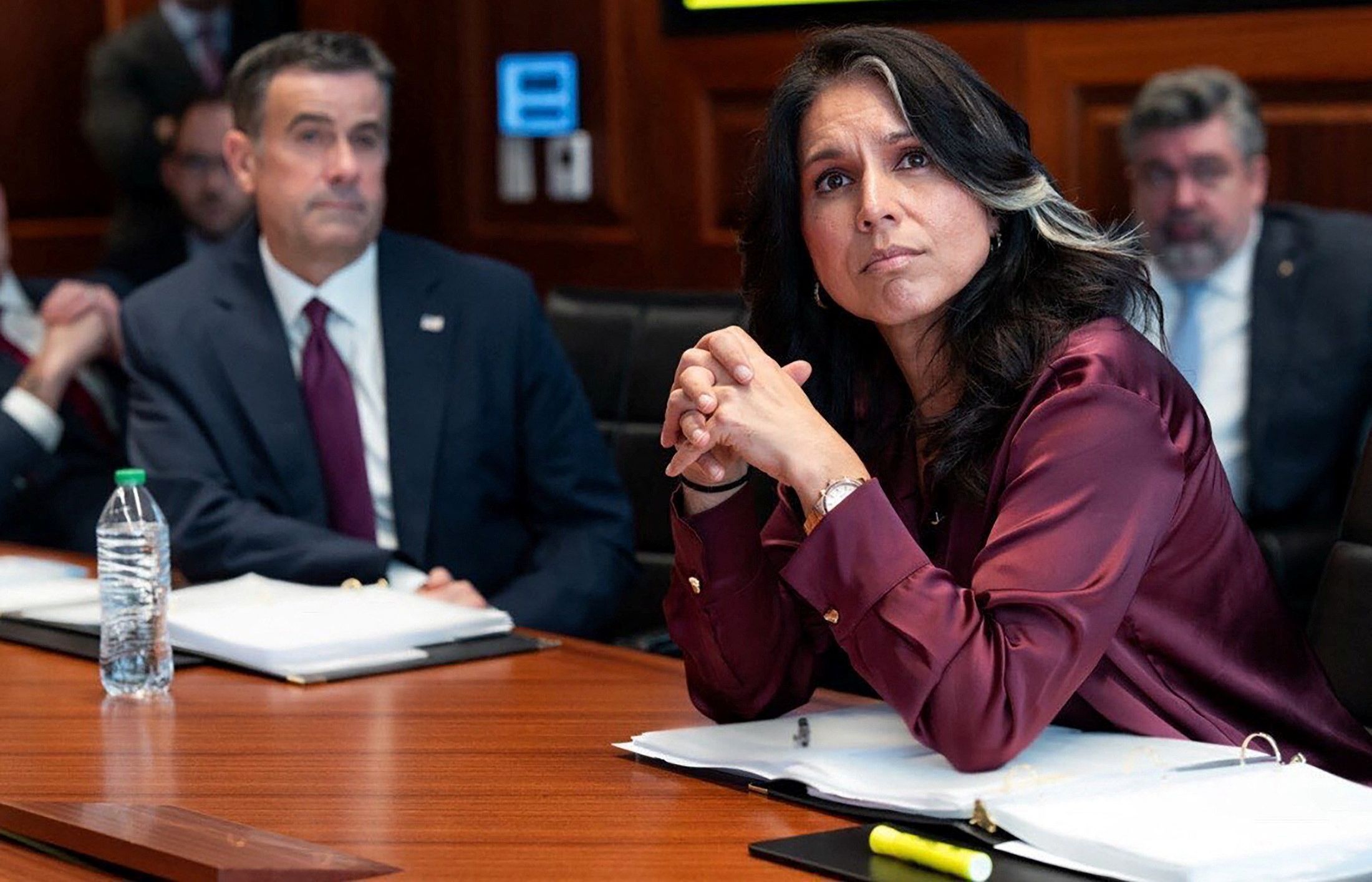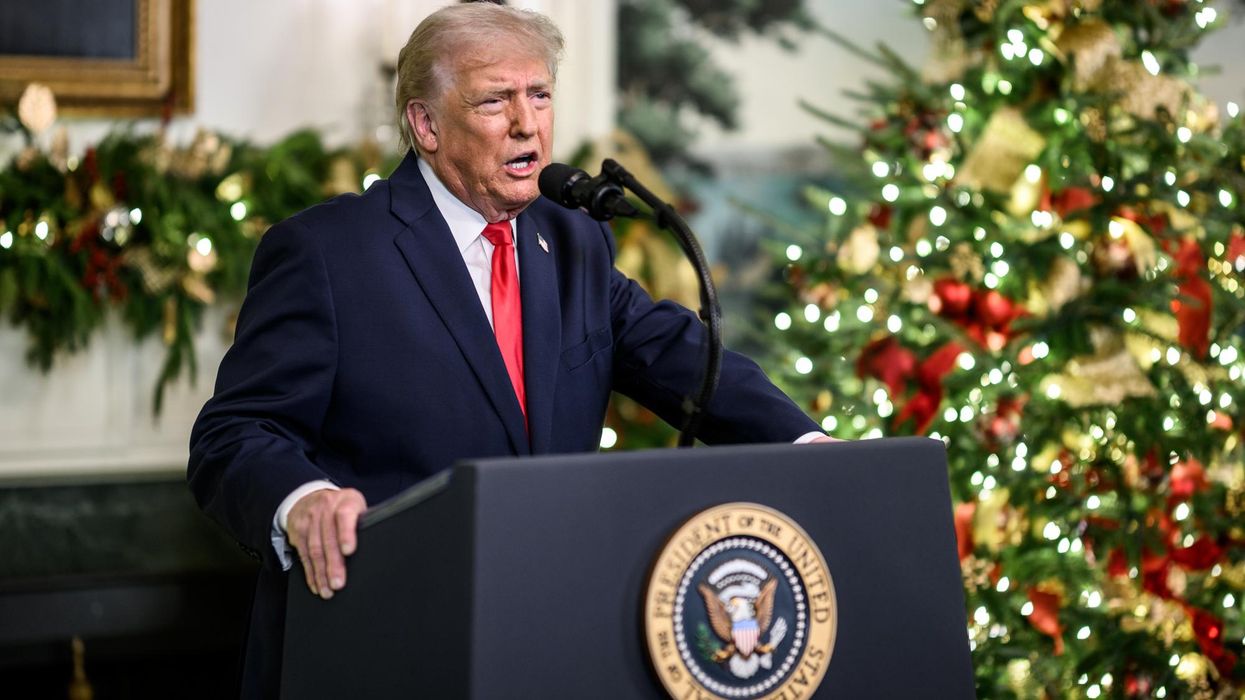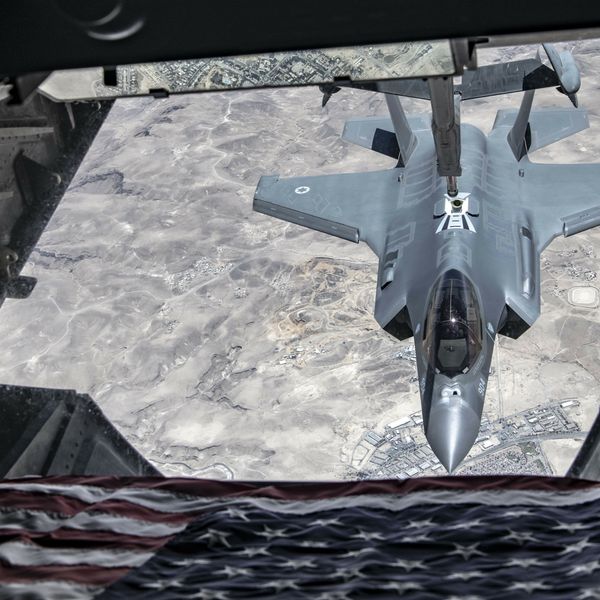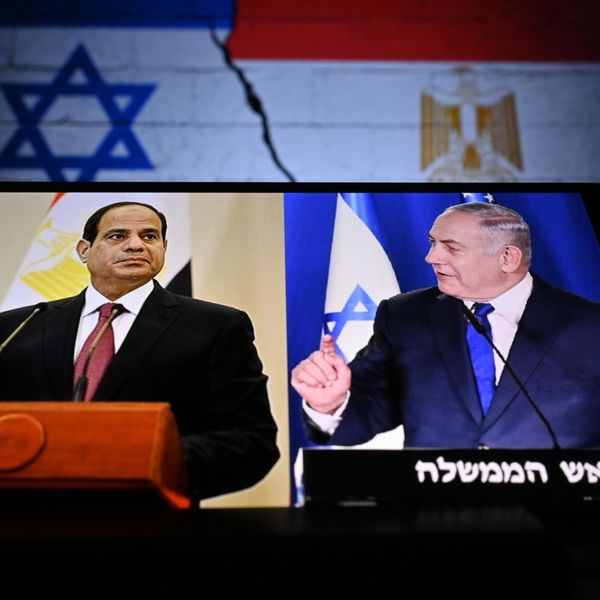President Donald Trump has twice, within the space of a week, been at odds with U.S. intelligence agencies on issues involving Iran’s nuclear program. In each instance, Trump was pushing his preferred narrative, but the substantive differences in the two cases were in opposite directions.
Before the United States joined Israel’s attack on Iran, Trump dismissed earlier testimony by Director of National Intelligence Tulsi Gabbard, in which she presented the intelligence community’s judgment that “Iran is not building a nuclear weapon and Supreme Leader Khamanei has not authorized the nuclear weapons program he suspended in 2003.” Questioned about this testimony, Trump said, “she’s wrong.”
Then, after a U.S. air attack that Trump claimed had “completely and fully obliterated” key Iranian nuclear capabilities, press reports about a leaked preliminary assessment by the Defense Intelligence Agency suggested that the U.S. airstrikes instead had probably set back the Iranian program only a few months. The White House pushed back, with Trump himself reaffirming his “total obliteration” language. White House press secretary Karoline Leavitt declared that the reported intelligence assessment was “flat-out wrong.”
In the first instance, Trump was accusing U.S. intelligence of under-estimating a supposed threat. In the second instance, he was in effect accusing it of over-estimating what was left of this “threat” after the U.S. attack. The intelligence agencies were not in the first instance being dovish Pollyannas before suddenly becoming hawkish alarmists.
Instead, the episodes reflect Trump’s attempted spinning of the story into one in which he supposedly confronted a grave threat and, through his bold action, has eliminated it.
The administration has gone into overdrive in endeavoring to discredit any suggestion that the impact of the U.S. airstrikes on the Iranian nuclear program was not momentous and long-lasting. CIA Director John Ratcliffe issued a statement that “a body of credible intelligence indicates Iran’s Nuclear Program has been severely damaged by the recent, targeted strikes.” DNI Gabbard asserted on social media that “new intelligence confirms what @POTUS has stated numerous times: Iran's nuclear facilities have been destroyed,” while Gabbard disparaged the “propaganda media” for reporting on the leaked DIA assessment.
The pushback misses the main issues of whether the airstrikes were wise and what comes next in confrontation with Iran. Nobody disputes that the U.S. attack inflicted heavy damage. 30,000-pound bombs tend to do that. The Iranian foreign minister has acknowledged “significant and serious damage” to nuclear facilities from the U.S. strikes.
But even severe physical damage does not imply an inability to rebuild and reconstitute a program. Nor does it deny that even with severe damage to targeted facilities, there remain materials and equipment that can be a foundation for reconstitution.
The underground enrichment facility at Fordow — the principal target of those 30,000-pound bombs — has received the most attention in the post-attack commentary. That facility is so deep underground that there is good reason to doubt that even multiple bunker-busters could destroy it, although Rafael Grossi, head of the International Atomic Energy Agency (IAEA), assesses that the sensitivity of the enrichment centrifuges to vibration means the centrifuges were probably put out of commission.
At least as important is the high likelihood that Iran, anticipating attacks, had already moved at least some of its enriched uranium to undisclosed locations. This may have included 400 kilograms of uranium enriched to 60 percent that had been at Fordow.
There also remains the scientific and engineering talent that has been involved in a decades-long nuclear program and that is spread across too many people in Iran for even Israel to assassinate. That talent can be applied to reconstruction of any of the nuclear facilities, including the uranium conversion facility that Secretary of State Marco Rubio highlighted in adding his voice to the administration message about severe damage to the Iranian program.
Supposed timelines for potential reconstitution of Iran’s nuclear program have been thrown into the efforts to spin this story, carelessly and without foundation. Both Ratcliffe and Gabbard spoke of “years” needed for reconstruction. Trump said the Iranian program is “gone for years.” Asked whether the United States would strike Iran again, Trump replied, “I’m not going to have to worry about that,” implying no reconstructed Iranian program during the remaining three and a half years of his administration.
It is as yet impossible to make such projections that go much beyond educated guesses, and not only because solidly based projections would require on-scene observations that neither the IAEA nor the United States currently has. The timeline for reconstitution also depends heavily on the priority that the government doing the reconstituting gives to the project and the sacrifices it is willing to make to achieve its objective.
In this regard, one recalls how in the 1970s, Prime Minister Zulfikar Ali Bhutto of Pakistan declared that Pakistanis would “eat grass, even go hungry” if necessary to acquire a nuclear weapon. Saddam Hussein’s Iraq, after Israel bombed an Iraqi nuclear reactor in 1981, initiated an accelerated, high-priority clandestine nuclear program that brought Iraq far closer to acquiring a nuclear weapon than it ever was on track to achieve before the Israeli attack.
The administration’s spin efforts are especially off-target concerning Iranian intentions. This is the subject on which Trump first blew off a major intelligence community judgment and which determines whether warfare was ever needed in the first place to prevent an Iranian nuclear weapon.
Exaggerating a foreign threat is especially easy to get away with when it is largely a matter of intentions rather than capabilities. An assertion about capabilities might later be disproved by material evidence, whereas proof or disproof of intentions involves the more difficult question of what is inside foreign leaders’ heads.
If no good evidence of an Iranian intention to build nuclear weapons ever surfaces, Trump can claim that it was his decisive action that cowed or dissuaded the Iranians from taking that step. Alternatively, if the Israeli and U.S. attacks lead the Iranians — seeing the need for a stronger deterrent — to build a nuclear weapon, Trump can claim that this was the Iranian intention all along. It will be difficult for the public to sort out what in this story is true and what is false.
The American public has its own preconceptions that aid this kind of administration spinning, including a willingness to assume the worst on anything having to do with Iran. The administration can also exploit basic public ignorance on the subject, as indicated by a poll in 2021 in which 61 percent of respondents mistakenly believed that Iran already possessed nuclear weapons.
The relentless efforts of the Israeli government to depict Iran as a grave threat have played into perceptions held by elites as well as the public. Israel has injected scraps of intelligence into this alarmist campaign, which have involved supposedly “new” revelations that do not go beyond prior knowledge, or that are circumstantial observations that require a chain of worst-case assumptions to connect them to a supposed Iranian decision to build a bomb.
Israel has demonstrated through its offensive operations how extensive is its intelligence penetration of Iran. If the thin gruel it has offered about a supposed Iranian decision to build a nuclear weapon is the best it can come up with, this thinness is itself evidence that Iran had made no such decision.
Israeli Prime Minister Benjamin Netanyahu has been saying for more than three decades that Iran was on the verge of building a nuclear weapon. Although even a broken clock is correct twice each day, to believe what Netanyahu says about Iranian nuclear matters is to disregard how wrong he has been for so long. It also disregards how slanted any Israeli intelligence revelations on this subject are sure to be, given what has been the strong Israeli objective to get the United States involved in a war on Iran.
It is safe to assume that any intelligence Israel offers is a small fraction of what it has collected on the subject, carefully selected to support its effort to drag the United States into war. That is called cherry-picking. Americans should understand this concept, given that 22 years ago they were the targets of a similar tendentious use of intelligence to sell the invasion of Iraq, an episode I have recounted at length elsewhere.
The recent statements by Ratcliffe and Gabbard intended to sustain Trump’s assertions of “obliteration” are another instance of cherry-picking. The statements are not assessments. When Ratcliffe, for example, cites “new intelligence” that “several key Iranian nuclear facilities were destroyed and would have to be rebuilt over the course of years,” this says nothing about what has not been destroyed and what is the reconstitution potential of the entire Iranian nuclear program.
Trump earlier had been aiming for an agreement with Iran that he could tout as a “better deal” than what Barack Obama had achieved. But now that Netanyahu has sucked him into warfare with Iran, Trump says, “I don’t care if I have an agreement or not.” He will find it hard to ignore evidence of continued Iranian nuclear capabilities and to brush aside U.S. intelligence assessments on that subject.
Trump will feel pressure to deal with those capabilities, and he will have difficulty sticking to his prediction that he will not have to worry about additional strikes on Iran. The pressure will come especially from the Israeli government, whose objective of having the United States militarily engaged against Iran will continue and whose defense minister, Israel Katz, is talking about an “enforcement policy” involving further attacks against Iran.
Meanwhile, the intelligence task of monitoring what remains of the Iranian nuclear program will be more difficult than ever. There is no substitute for on-site monitoring by international inspectors, especially the intrusive sort provided for in the comprehensive agreement that Iran signed in 2015 and that Trump abandoned three years later. Iran, angry with the IAEA for failing to condemn formally the Israeli and U.S. attacks and suspecting the agency of providing information to Israel that has facilitated Israeli attacks and assassinations, is in no hurry to restore the inspectors’ access.- Déjà coup: Iran war activates regime change dead-enders ›
- If Iranian regime collapses or is toppled, 'what's next?' ›
















